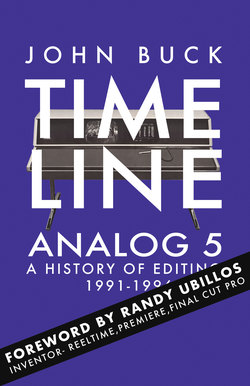Читать книгу Timeline Analog 5 - John Buck - Страница 17
На сайте Литреса книга снята с продажи.
MEDIA 100 - THE FIRST ATTEMPT
ОглавлениеIn late December 1991 came news in trade magazines of an unexpected editing product from a hardware vendor in Marlboro, Massachusetts. Macs become video editors with Media 100. Media 100 evangelist Tobin Koch observed:
If you look at video capture boards or multimedia products today, they look fine on an RGB monitor but they look terrible if you output them to a television.
Data Translation went public with plans to ship a digital, non-linear editing system called Media 100. John Molinari’s small breakaway MultiMedia team at Data Translation had built a Mac-based system that it claimed combined full-motion, full-size video, and CD-quality audio.
Media 100's video editing capabilities include random access editing, separate sound editing, video transitions and integration of purely digital data.
The Media 100 bundle used a proprietary NuBus compatible card with JPEG based compression scheme that had been created in-house. Users could input full-motion video at 30 frames per second, edit in digital form and output a completed edit to a professional videotape machine with no loss of quality.
The methodology was a clear point of difference to Avid.
Unlike other digital non-linear editing systems, the quality of the compressed video is high enough to be output directly to tape, virtually eliminating the need for further post-production work in an online editing suite.
At low compression levels, the Media 100 system could store 22 minutes of video on a standard 1.2 GB hard drive, and up to six such drives could be daisy-chained together to provide additional storage. Koch told the press:
…while the initial version of the Media 100 system would only be able to perform simple cuts and fades, Data Translation had plans for an optional video-effects accelerator to expand the Media 100’s abilities. The add-on would provide wipes and dissolves and be available in mid-April (92) for less than $3,000.
The Media 100 system was due at the upcoming NAB but Letraset’s MediaBlender was not.
